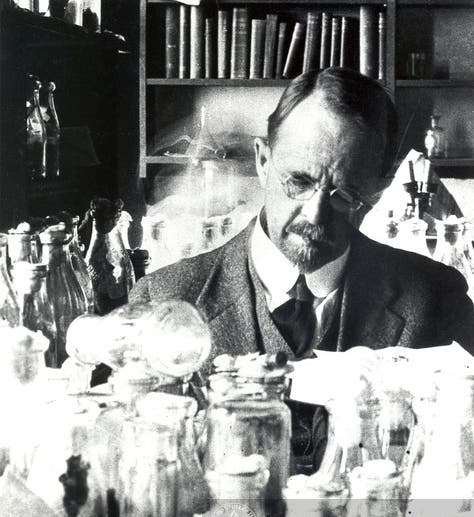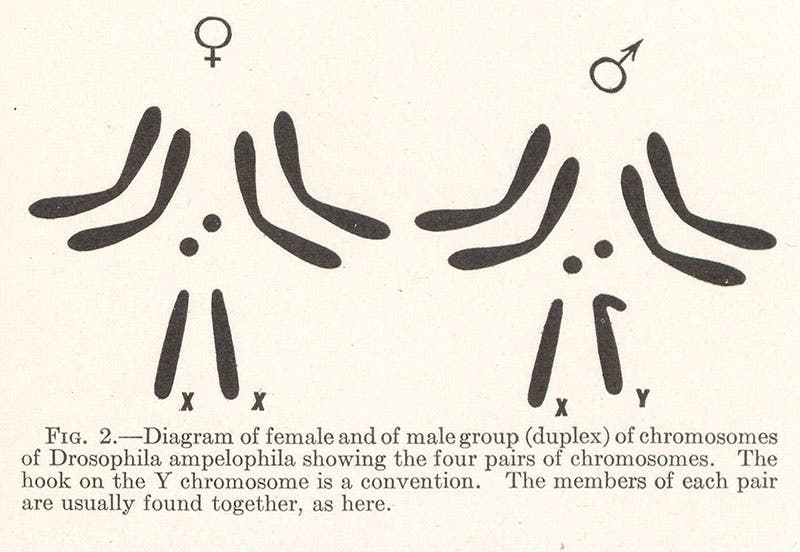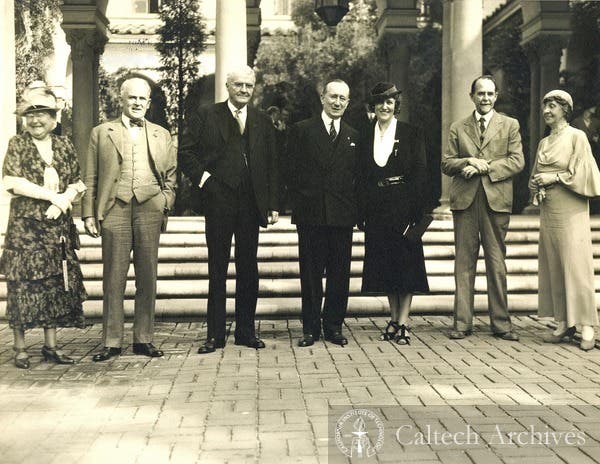Scientist of the Day - Thomas Hunt Morgan
Thomas Hunt Morgan, an American geneticist, was born Sep. 25, 1866. In 1900, the work of Gregor Mendel was rediscovered, which excited many people, but not Morgan. He was unimpressed with the arguments for genes, and especially with the idea that genes are on chromosomes, newly discovered bodies in the cell nucleus. Instead Morgan was interested in mutations, a newly coined word for large-scale changes in organisms, which Morgan preferred to Darwin's small random variations as a mechanism for evolution.
But in 1909, Morgan encountered Drosophila, the fruit fly, the tiny bane of ripe bananas, and in looking for mutations in fruit flies over the next 6 years, Morgan completely changed his mind about Mendel, genes, and chromosomes (and probably about the appeal of eating bananas). In 1915, Morgan, with 3 members of his lab: Arthur Sturtevant, Hermann Muller, and Calvin Bridges, published a book called The Mechanism of Mendelian Heredity, in which he announced his conversion to Mendelism and revealed that genes are real entities, that genes are located on chromosomes, and that the chromosomes replicate in such a manner as to sort, mix, and pass genes on to offspring exactly as Mendel had predicted.
We have a copy of The Mechanism of Mendelian Heredity in our collections, and most of our illustrations today come from this work. The frontispiece (fifth image) shows that Drosophila traits are linked in such a way that they can be divided into four groups, one of them very small. The fact that Drosophila chromosomes exist as four pairs, one of them very small, was not, for Morgan, a coincidence – if traits are the product of genes that are arranged on chromosomes, that is just what one would expect (fourth image). Another plate shows what happens when you cross a red-eyed (normal) fly with a white-eyed mutant fly – the second generation exhibits the 3:1 ratio that Mendel had been the first to discover (third image).
Morgan’s lab at Columbia came to be called the Fly Room, over which he presided until he departed for Cal Tech in 1928. Recent scholarship has suggested that Morgan was less than generous in giving credit to his lab team, especially the core of Sturtevant, Muller, and Bridges, who made most of the crucial discoveries that have come to be associated with Morgan’s name. Nevertheless, it was Morgan who was awarded the Nobel Prize in Medicine/Physiology in 1933 for the chromosome theory of inheritance, although it is nice that Hermann Muller, at least, won his own Nobel Prize in 1946.
A photograph in the Cal Tech archives shows the new Nobelist Morgan along with resident Nobelist Robert A. Millikan, and visiting Nobelist Guglielmo Marconi (sixth image).
Dr. William B. Ashworth, Jr., Consultant for the History of Science, Linda Hall Library and Associate Professor emeritus, Department of History, University of Missouri-Kansas City. Comments or corrections are welcome; please direct to ashworthw@umkc.edu.











